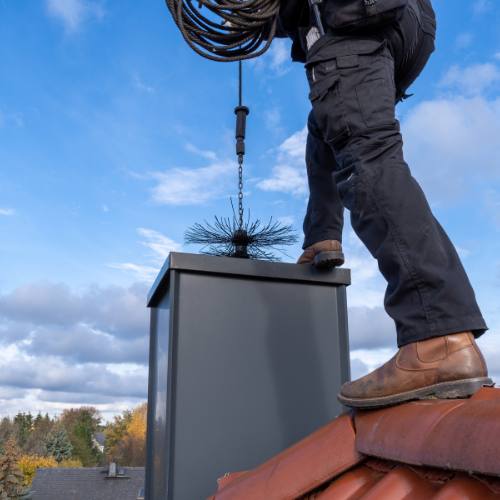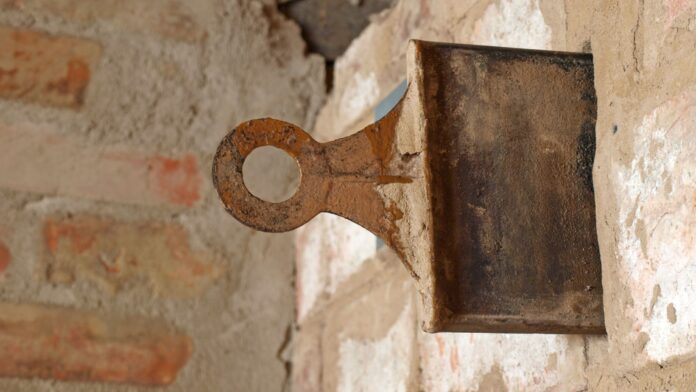Table of Contents
Understanding the role and varieties of dampers in fireplace setups is crucial for enhancing the efficiency and safety of your home heating system. These essential devices regulate airflow within the chimney, ensuring optimal fire management and indoor air quality. Whether you’re navigating the responsibilities of homeownership or aiming to improve your fireplace maintenance knowledge, grasping the functionality and types of dampers in fireplaces can significantly elevate your home’s warmth and security.
Understanding Dampers in Fireplaces
A damper in a fireplace serves as a controllable valve that directs the flow of air and smoke through the chimney. It acts as a barrier or gateway that can be adjusted to either allow or restrict airflow, playing a vital role in both the active use of a fire and in preserving indoor air quality when the fireplace is idle. By managing the damper’s position, homeowners can fine-tune their fire’s intensity, prevent unwanted drafts, and block cold external air from infiltrating the home via the chimney.
Varieties of Dampers in Fireplace Systems
Throat Dampers
Situated just above the fireplace’s firebox, at the chimney’s lower end, throat dampers are the traditional choice. They can be manipulated to either open or shut the air passage directly above the fire, using a lever, handle, or chain for operation. Known for their direct control over airflow, throat dampers are a staple in many fireplace systems.
Chimney Cap Dampers
Positioned at the chimney’s peak, chimney cap dampers seal off the flue when the fireplace is not in use. Operated by a chain or cable stretching down into the fireplace, these dampers not only regulate airflow but also prevent debris and animals from entering the chimney, adding a protective layer.
Inlet Dampers
Specifically designed to control the volume of air entering the hearth, inlet dampers assist in igniting the fire or moderating its strength. Though less commonly found, they offer precise manipulation of the air fueling the fire, thereby enhancing combustion control.
Stovepipe Dampers
Embedded within the stovepipe of wood-burning stoves, these circular dampers help fine-tune the draft and fire intensity by adjusting the exhaust flow. Their simple design allows for easy operation and immediate adjustment to the fire’s needs.
Inflatable Damper Seals
Primarily utilized when the fireplace is dormant, inflatable damper seals obstruct the flue to prevent the escape of warm indoor air. It’s critical to remove these seals before lighting a fire to avoid potential fire hazards.
The Significance of Dampers in Fireplace Efficiency
Implementing an effective damper system is key for several reasons:
- Energy Conservation: Dampers seal the chimney when not in active use, minimizing heat loss and reducing energy expenses.
- Safety Assurance: Proper airflow regulation ensures that combustion gases are safely expelled from the living space.
- Fire Control: The ability to adjust the damper facilitates better control over the fire’s burning rate, optimizing the fireplace’s warmth and ambiance.
Typical Issues with Dampers in Fireplaces
Exposure to soot, creosote, and high temperatures can lead to functional problems with dampers, such as:
- Accumulation: The build-up of soot and creosote can obstruct the damper’s movement, impairing its ability to open or close fully.
- Rust and Wear: Dampers made of metal can suffer from rust and corrosion due to moisture, affecting their structural integrity.
- Deformation: Intense heat may warp dampers, preventing them from sealing properly.
Upkeep and Repair Strategies
Regular professional inspections can detect and address issues with dampers in fireplaces, ensuring they remain in optimal working condition. If a damper becomes damaged or malfunctions, seeking immediate repair or replacement is essential for maintaining the safety and efficiency of your fireplace.
Conclusion
Dampers in fireplaces are foundational to the proper functioning of your home heating system. Regular maintenance and understanding their operation are key to ensuring your fireplace remains a secure, efficient source of comfort and warmth. Remember, a well-maintained damper not only boosts your fireplace’s performance but also contributes to your home’s overall energy efficiency and safety.




